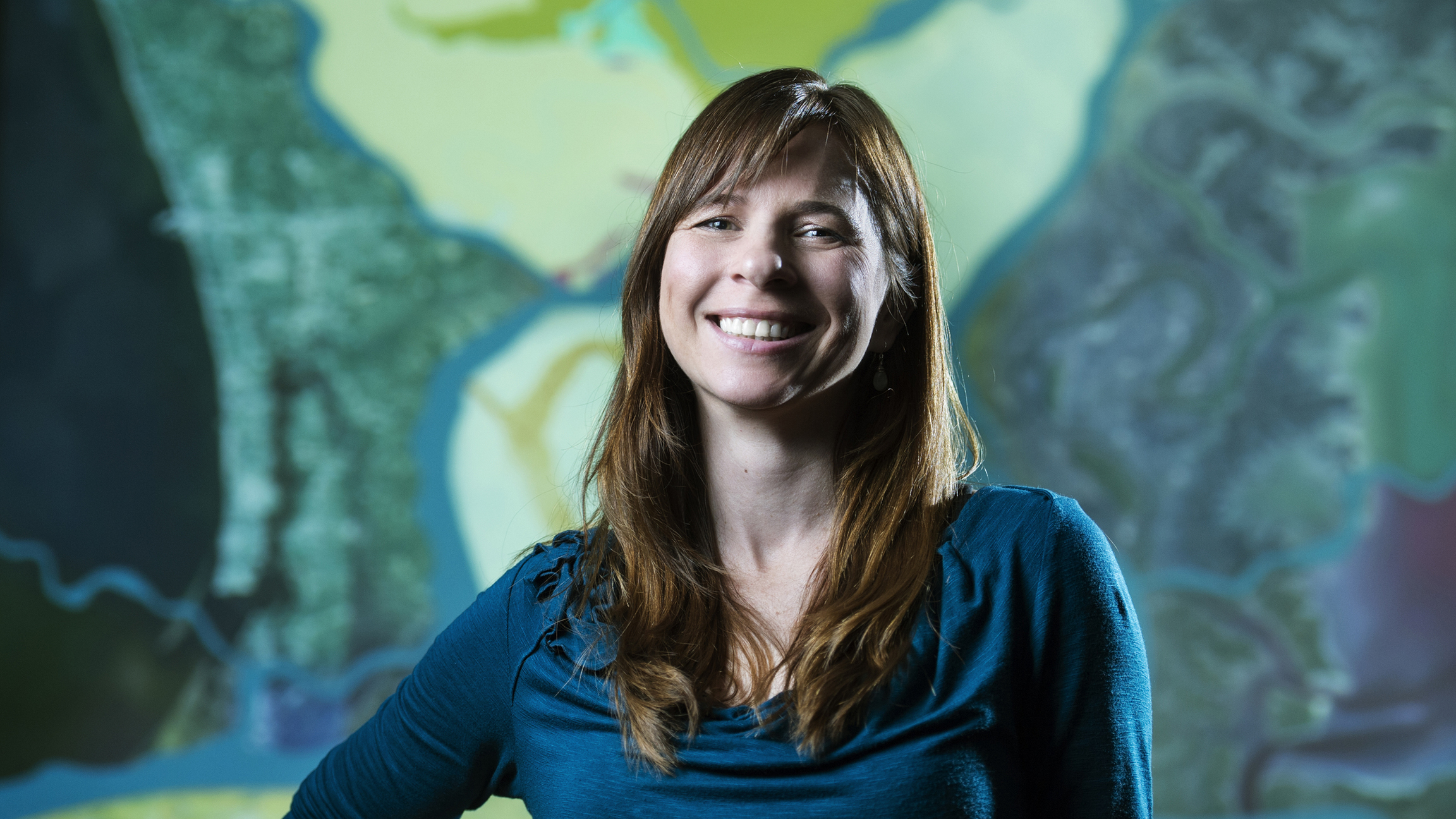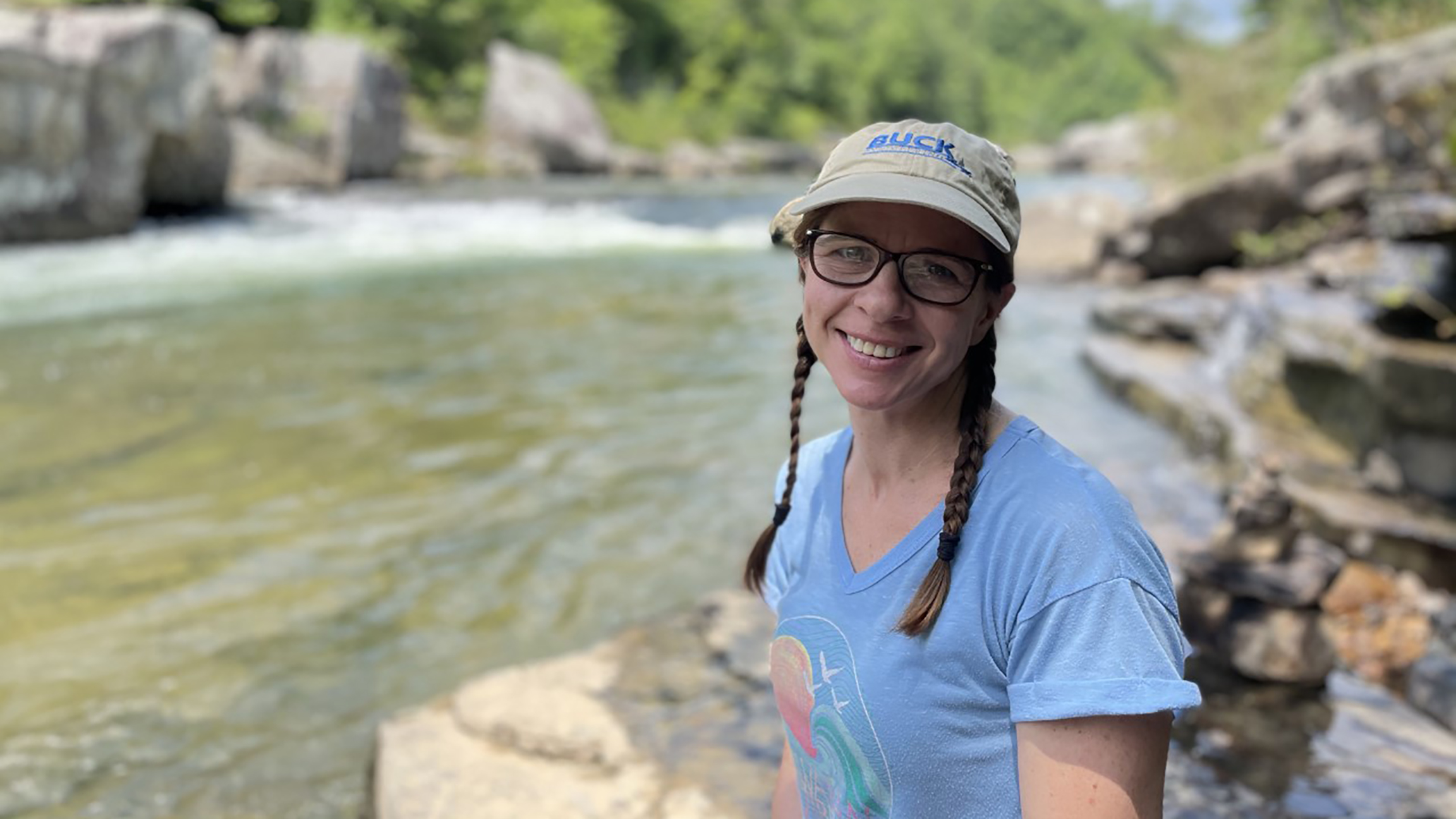WE SAT DOWN WITH AU’S DR. ANNA LINHOSS, AN ASSOCIATE PROFESSOR IN THE SAMUEL GINN COLLEGE OF ENGINEERING’S DEPARTMENT OF BIOSYSTEMS ENGINEERING.
Tell us about your background and current position.
I grew up in Virginia during the 1980’s and 1990’s and lived right on the Chesapeake Bay. When I was a kid, we could collect bushels of oysters from the mud flats behind my house. Through a combination of nutrients and disease those oysters died out by the time I was a teenager. Since then, researchers, managers, and oystermen have been working hard to restore the oyster populations in the Chesapeake Bay. I am witnessing a similar but different phenomenon here in the Mississippi Sound and Mobile Bay. I am passionate about my work because I love the Bay and the outdoors and personally know what it was like to lose an important resource when I was growing up.
I have a bachelor’s degree in Anthropology from the University of Colorado, Boulder and a Masters and PhD degree from the University of Georgia and University of Florida in Biological Engineering. Before coming to Auburn University, I was also an Associate Professor in the Department of Agricultural and Biological Engineering at Mississippi State and Associate Director of the Northern Gulf Institute.

Photo Credit: Megan Bean / © Mississippi State University
Describe your current research activities.
I am interested in simulating large-scale coastal hydrology and ecosystems. My research focuses on how hydrology affects ecological systems, how to model those interactions, and how to assess and make sense of the model results.
One project that I am very interested in right now is understanding how humans are affecting salinity in the Mississippi Sound and Mobile Bay and how those changes affect species like oysters and dolphins. The Mississippi Sound and Mobile Bay are estuaries where freshwater mixes with seawater. These areas are particularly important for fish and wildlife. The Bonnet Carré Spillway is a freshwater diversion that protects New Orleans from Mississippi River flooding. The freshwater that is diverted through the Bonnet Carré Spillway flows into the Mississippi Sound.

The Bonnet Carré Spillway brings pulses of freshwater to the Mississippi Sound. Credit: Anna Linhoss
Opening the spillway causes dramatic changes in salinity and can kill oysters, fish, dolphins, and shrimp. This is a complex issue because we must protect New Orleans from flooding, but we also need to protect our ecosystems and critical species. My research on this problem involves using hydrodynamic models to understand how management scenarios affect flow, salinity, and ecosystem health in the Mississippi Sound and Mobile Bay.

Simulated salinity throughout Mobile Bay, Mississippi Sound, and Lake Pontchartrain on 4/20/2018. Credit: Anna Linhoss
In your view, what are future priorities for Alabama water resources research?
I believe that Mobile Bay and Alabama’s coastline are going to become a stronger focus of interest in the coming decade. Coastal areas are being affected by so many things: sea-level rise, nutrient loading, water diversions, eroding barrier islands, and development. I have personally witnessed big conservation movements occurring in the Chesapeake Bay, Mississippi Sound, and Florida’s Biscayne Bay. I think that Alabama’s coastline and Mobile Bay are due for a strong wave of conversation interest and effort.
What are 2 media pieces you think everyone should read/watch and why?
Ecology of a Cracker Childhood: This book tells the story of a poor girl growing up in rural Georgia who became an ecologist with a passion for saving longleaf pines. It alternates chapters describing her childhood and the ecosystem she grew up in.
Beasts of the Southern Wild: It’s a poetic and moving fictitious story of how sea-level rise can affect local people and ecosystems.

Dr. Linhoss streamside. Photo Credit: John Linhoss
For more information about Dr. Linhoss’ research, visit the Hydroecology Lab at Auburn University webpage.
